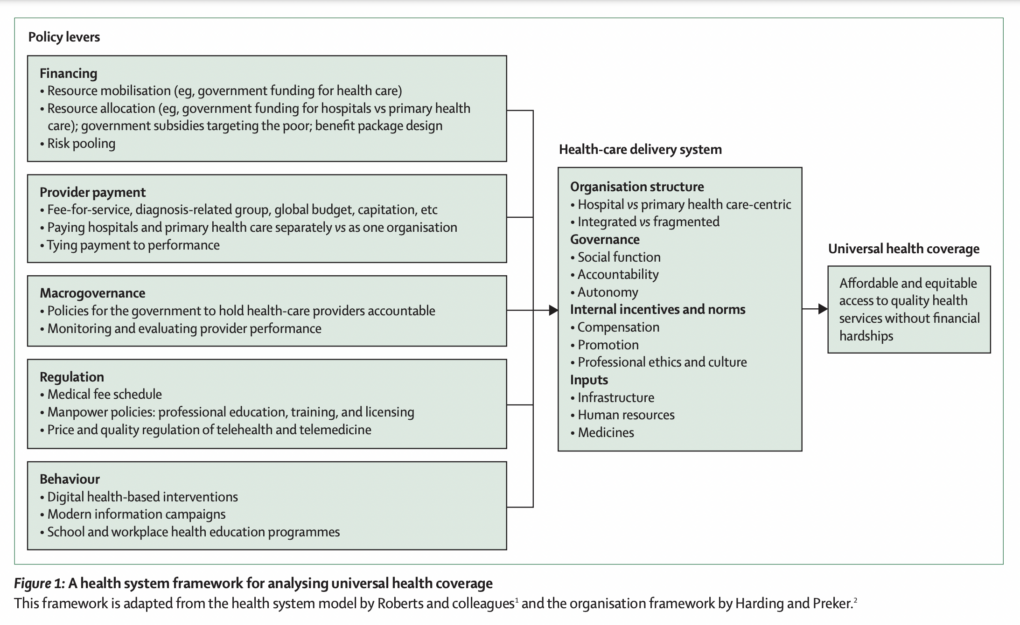Abstract
This report analyses the underlying causes of China’s achievements and gaps in universal health coverage over the past 2 decades and proposes policy recommendations for advancing universal health coverage by 2030. Although strong political commitment and targeted financial investment have produced positive outcomes in reproductive, maternal, newborn, and child health and infectious diseases, a fragmented and hospital-centric delivery system, rising health-care costs, shallow benefit coverage of health insurance schemes, and little integration of health in all policies have restricted China’s ability to effectively prevent and control chronic disease and provide adequate financial risk protection, especially for lower-income households. Here, we used a health system conceptual framework and we propose a set of feasible policy recommendations that draw from international experiences and first-hand knowledge of China’s unique institutional landscape. Our six recommendations are:
- Instituting a primary care-focused integrated delivery system that restructures provider incentives and accountability mechanisms to prioritise prevention.
- Leveraging digital tools to support health behaviour change.
- Modernising information campaigns.
- Improving financial protection through insurance reforms.
- Promoting a health in all policy.
- Developing a domestic monitoring framework with refined tracer indicators that reflects China’s disease burden.
Resources
-
Yip, Winnie, Hongqiao Fu, Weiyan Jian, Jue Liu, Jay Pan, Duo Xu, Hanmo Yang, Tiemin Zhai. 2023. “Universal health coverage in China part 2: addressing challenges and recommendations.” The Lancet Public Health 2023;8(12):e1035-e1042. doi:10.1016/S2468-2667(23)00255-4
- The companion paper “Universal health coverage in China part 1: progress and gaps” is available here: doi:10.1016/S2468-2667(23)00254-2

